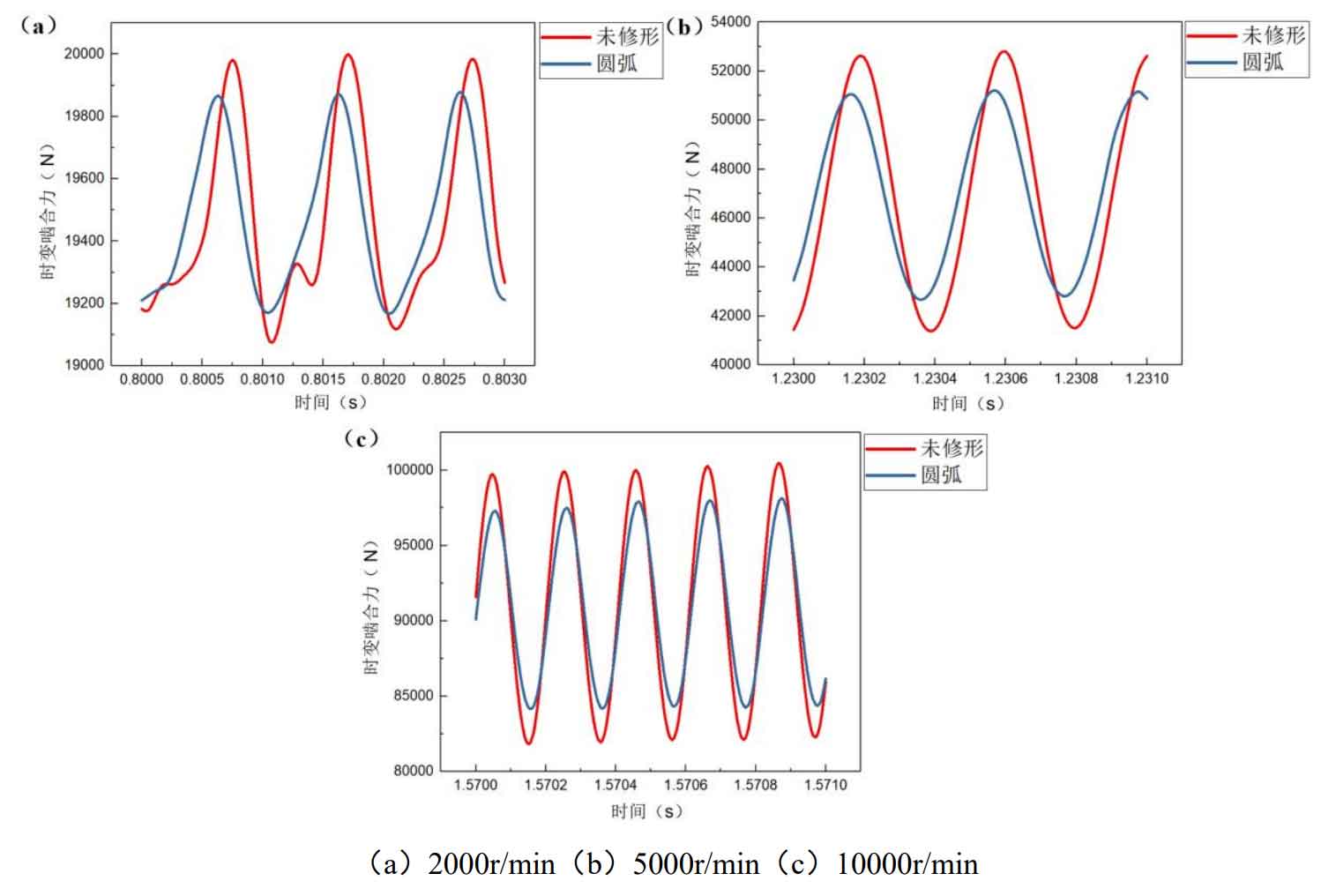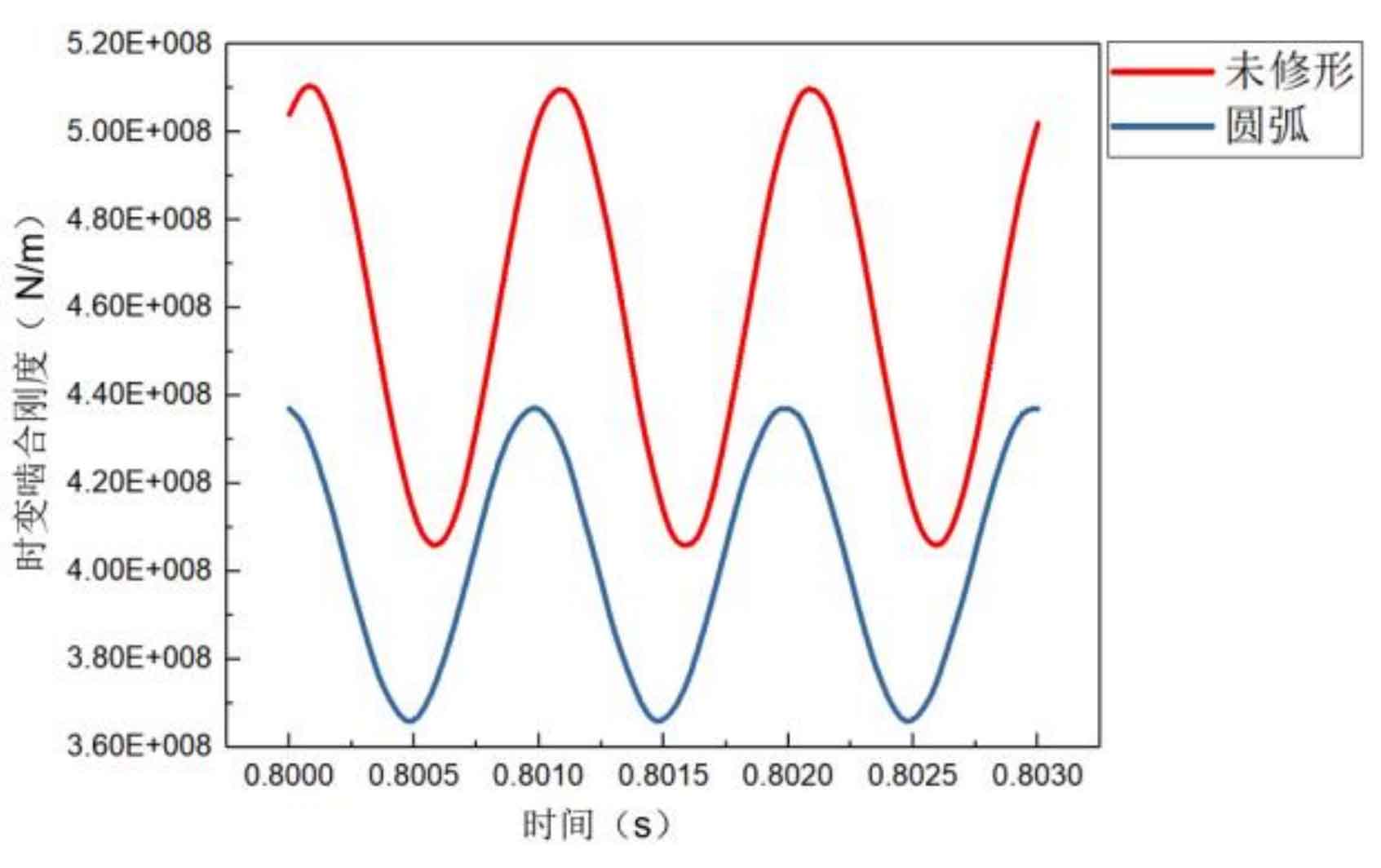The optimal modification scheme of the addendum arc of the long tooth profile is 5% of the modification amount of the driving gear μ m. Modification amount of driven wheel 4 μ m。 Figure 4.19 shows the time varying meshing force curves of the helical gear pair before and after optimized modification of the addendum arc of the long tooth profile at different speeds. Obviously, the scheme works well. The time-varying meshing force decreases significantly under all working conditions, and the meshing impact phenomenon under low speed working conditions is eliminated, making the curve more smooth. In addition, for low speed, medium speed and high speed conditions, the peak values of time-varying meshing force changed from 1999.9113 N, 52794.277 N and 100481.32 N to 19875.703 N, 51188.09 N and 97988.586 N, respectively, and decreased by 123.41 N, 1606.187 N and 2492.734 N.

Figure 4.20 shows the time-varying meshing stiffness curves before and after the optimal modification of the helical gear pair through the tooth top arc of the long tooth profile. It can be seen that the scheme significantly reduces the time-varying meshing stiffness of the helical gear pair of the reducer of an electric vehicle, and not only does the peak stiffness change from 5.1 before the modification × 108N/m reduced to 4.37 × 108N/m, decreased by 14.3%, and the fluctuation range also changed from 4.06 before modification × 108N/m~5.1 × 108N/m reduced to 3.66 × 108N/m~4.37 × 108N/m。

Therefore, it can be considered that the dynamic excitation of the helical gear pair in the reducer of an electric vehicle is significantly reduced, the meshing impact phenomenon disappears, and the severe vibration of the helical gear pair is effectively suppressed after the optimal modification of the tooth top arc of the long tooth profile.
